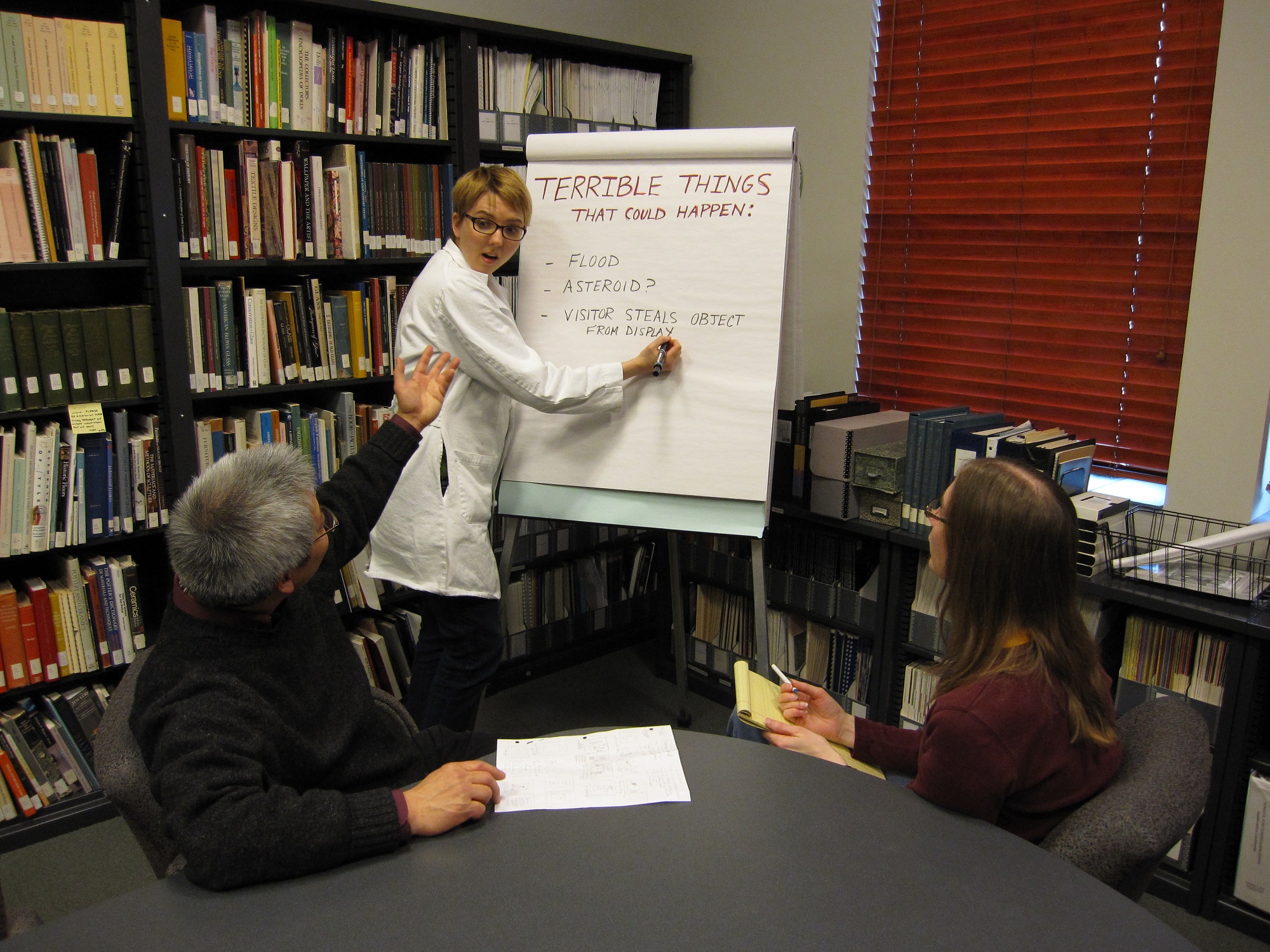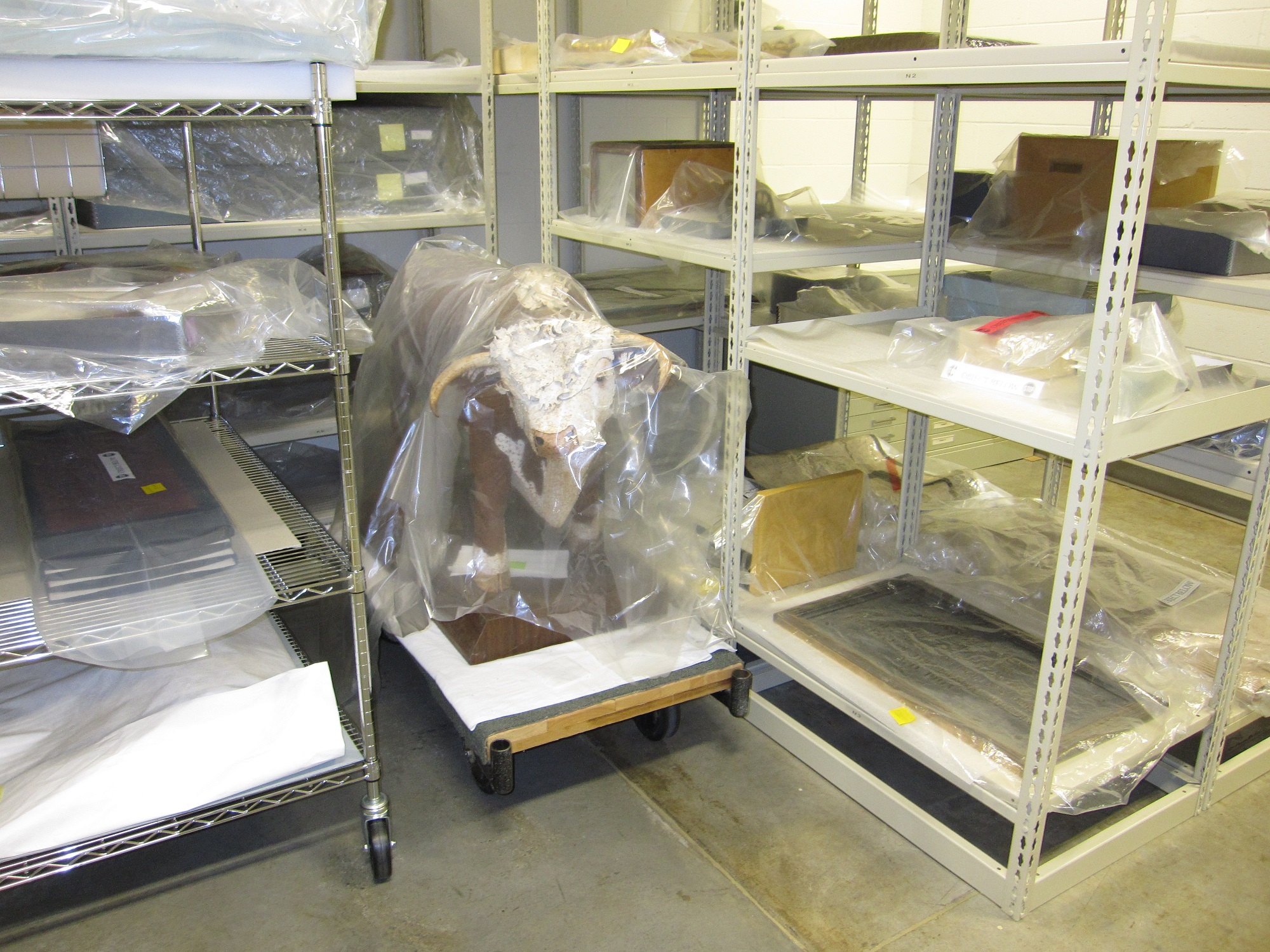May 1st, or May Day, is the day set aside by cultural institutions to make sure they are prepared in case of emergencies. It is important for institutions with collections to have a disaster preparedness plan and update it on a regular basis. Individuals and families with collections and heirlooms that they want to protect will benefit from planning as well.

The first step in preparing a disaster plan is to anticipate what disasters are most likely to happen in your area and research what state and local resources might be available.
Sometimes, you are given enough warning to mitigate the effects of a disaster. However, emergencies, by their nature, are unplanned and unpredictable. They can pose a threat to life, health, or property. They can be on a major scale, like a tornado, or a minor scale, like a leaking pipe. They can be generalized such as an earthquake, or localized to a single room in a building. The most common sources of emergencies are weather, flooding and leaks, power failure, accidents, malfunctions, and crime.

Covering items in plastic overnight or while in storage can prevent damage from water or swings in temperature and relative humidity.
The fear and anxiety caused by an emergency can prevent people from acting as they should during that emergency. An emergency plan can help people respond with rational and calm actions, in cooperation with others, and following established protocols. The best response can only happen when there is an effective plan, well-trained staff, adequate supplies and equipment, and the opportunity to practice.

Having a supply kit ready for emergencies and making sure staff are aware of its location and how to use the supplies is an essential part of an emergency plan.
The size and scope of the plan depends on the size of the institution and collection it houses. Plans can be tailored to reflect the scale of the collection in addition to the size of the staff and resources available in the event of an emergency. Creating a thorough and effective plan is a complex process and should be done over time with careful thought. The American Institute of Conservation recommends the following preparation activities on their website HERE.
-
- If you have a disaster plan, dust it off and make sure it’s up to date.
-
- If you don’t have a plan, commit to creating one by making a timeline for developing it.
-
- Conduct a building evacuation drill, evaluate the results, and discuss ways to improve your staff’s performance.
-
- Update your staff contact information and create a wallet-size version of your emergency contact roster using the Pocket Response Plan™ (PReP™)
-
- Identify the three biggest risks to your collection or building (such as a dust storm, leaking water pipe, heavy snow, or power failure) and outline steps to mitigate them. You can use FAIC’s tools for risk evaluation to guide your assessment.
-
- Identify and prioritize important collection materials.
-
- Eliminate hazards such as storage in hallways, blocked fire exits, or improper storage of paints, solvents, etc.
-
- Make a plan to install any needed safety systems.
-
- Plan to train and drill an in-house disaster team.
-
- Provide staff with easily accessible disaster response information, such as the Emergency Response and Salvage Wheel.
-
- Get to know your local firefighters and police–invite them to come tour your institution and give you pointers on safety and preparedness.
-
- Plan to take a course on risk assessment or disaster planning.

It is important to regularly review your plan and make changes as necessary, for example due to staff changes or updating contact information.
American Alliance of Museum has a guide called “Developing a Disaster Preparedness/Emergency Response Plan” that can be found on their website: www.aam-us.org/wp-content/uploads/2018/01/developing-a-disaster-plan-final.pdf
Additional resources can be found here: www.aam-us.org/programs/resource-library/disaster-preparedness-response-resources/
Emergency Response and Salvage Wheel: store.culturalheritage.org/site/index.php?app=ecom&ns=prodshow&ref=FAIC-1
As always, if you have questions about your collections, please contact the Ford Conservation Center staff at [email protected] or 402-595-1180.



